For foods to be considered kosher, they must conform to kashrut, the Jewish dietary laws indicating what is and is not suitable for consumption by Jews who keep kosher. As part of a kosher diet, certain parts of beef are allowed to be eaten. Knowing the kosher parts of beef allows you to adhere to Jewish dietary laws.
Restricted Parts of Beef
To conform to Jewish beliefs, the hind-quarters of the cow are not to be eaten. The part of the cow that is the cut off point for being considered kosher is directly defined as the 13th rib of the animal, when counting from the front of the animal. The meat between the 12th and 13th rib is still considered kosher, and can be utilized. With the entire back half of the cow not being considered kosher, this excludes parts that are seen as premium cuts of beef, such as the filet mignon and the porterhouse. This also excludes all flank, sirloin, T-bone and round cuts.
Neck, Chuck and Shoulder Beef
The top section of the cow, located around the neck is all permitted meat. As the neck tends to be muscular in a cow, this meat is generally quite tough, and as a result is often ground. This includes the chuck, which is the most common area for ground meat used for hamburger meat. This is also the area where from which cuts of meat, such as the shoulder roast, chuck roast and the blade and arm are taken.
Rib Section
Just to the rear of the chuck area is the rib area of the cow. This is where many of the most tender cuts originate. This area is also where a large majority of the fat is stored, since the area has little to do with the everyday mobility of the cow. Prime rib is located here, which is considered the royalty of roasts according to some food experts. Also included in this area is the rib eye roast, as well as the beef back ribs, which are highly revered cuts.
Brisket, Shank and Short Plate
The brisket area is directly under the chuck area, and at the top section of the front legs. The shank area is directly below that, further down the leg. As a result to being part of the leg, these are tough cuts of beef. The beef in this area is often used in stews, due to its tough texture. This includes the section of beef referred to as corned beef. The short plate section is the underbelly of the cow located toward the front end next to the legs. This area has the skirt steak section, which is not entirely too tender, but is known for its delectable flavor. This is a rather long and thin section of beef.
Preparation
To adhere to the laws of kashrut, there are some general rules to be followed when eating beef. First and foremost, the beef must be killed in a kosher manner, which is to make the killing as quick and painless as possible, usually by swiftly cutting a primary vein with a very sharp knife. The animal must then be drained of the blood before cooking. A kosher butcher will have done this process before you purchase, often by the traditional method, which is to coat the meat in a thick layer of salt to draw the blood out. The meat is then cleansed twice to remove the salt. There is also a stipulation that beef, or any other permitted kosher meat, may not be consumed with dairy within a prescribed period of time, usually several hours, enough time for complete digestion. This stems from a passage in the Jewish holy book, the Torah, which states that a kid shall not be cooked in its mother’s milk. This also branches out into the cooking process, not allowing the same cookware that has been used for meat to be used for dairy and vice versa.
Related Articles
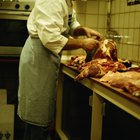
Cuts of Meat From a Front Quarter of ...
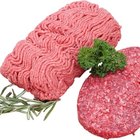
What Cuts of Meat Are Used for Ground ...

Different Cuts of Steak

How to Cook a Large Amount of Corned ...

Meat Parts of a Lamb
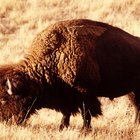
The Best Way to Prepare Bison Sirloin
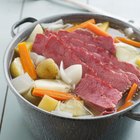
How to Pickle Beef Brisket

What Is Sirloin Roast?
What Part of the Cow Is Boneless Beef ...

Baking Time for Marinated Beef Brisket

Cook Time for Boiled Pork Roast

What Is a Black Forest Ham?
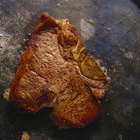
How to Cook Select Grade Beef Steak
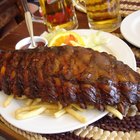
How to Buy the Best Spare Ribs at the ...

How to Convection Roast a Brisket

How to Cook Angus Beef Steak
What Cut of Meat Do You Use to Make ...
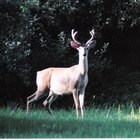
What Are the Dangers of Eating Venison?

The Best Way to Cook a Silverside

How to Cook a Beef Roast in a Roaster ...
References
Writer Bio
Caleb Schulte has been a professional writer since 2007. His contributions include online content and press releases for commercial production companies in Los Angeles County, as well as numerous screenplays for television and film. Schulte earned a Bachelor of Arts in graphic design from the University of Advanced Technology in Tempe, Ariz.